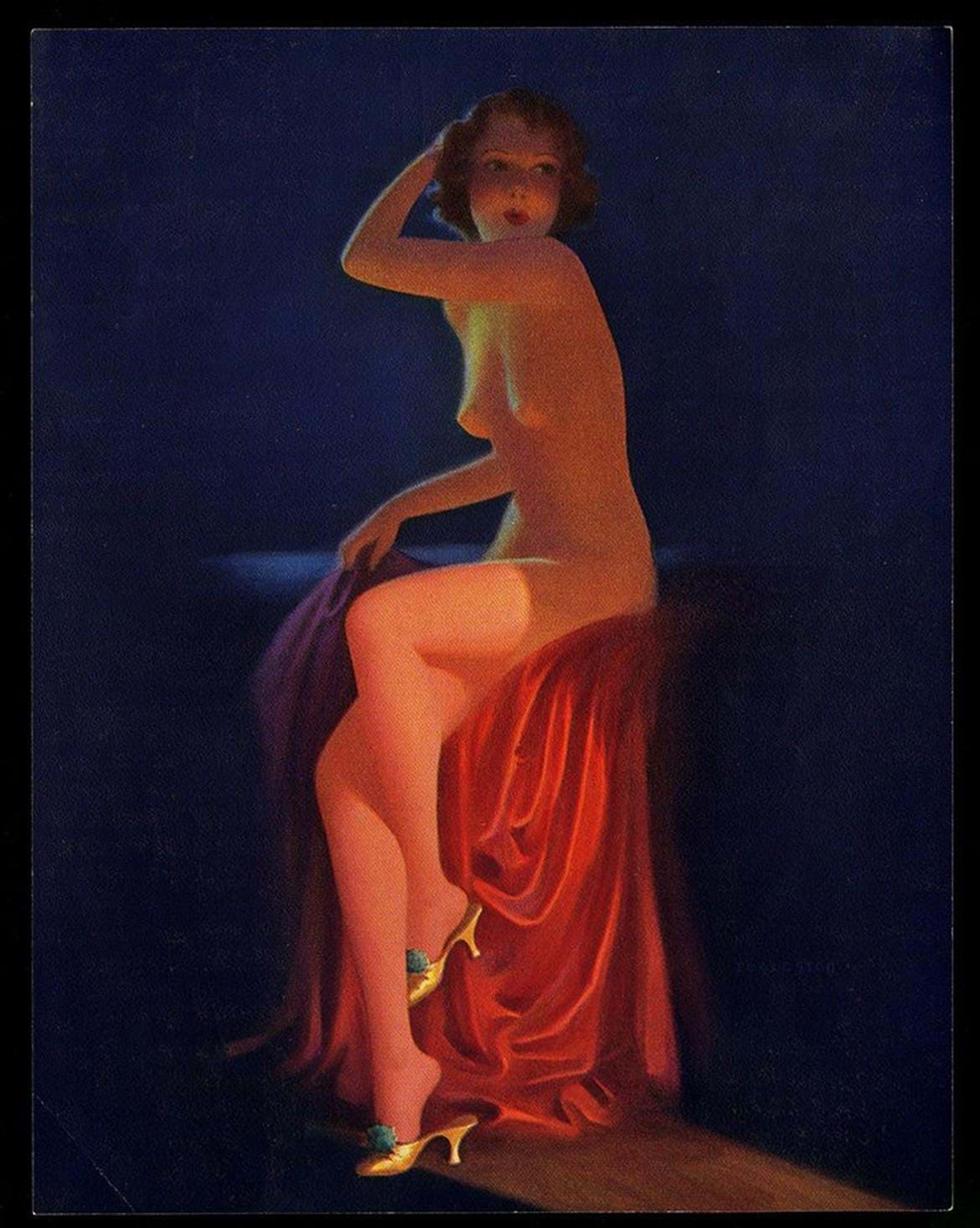Pin-Ups, from Photo to Painting
"Pin-up" is a famous retro style of sensual art that influenced women's beauty standards hugely. The form started as drawings and paintings but quickly morphed into photographs. Most popular in the 1940s and '50s, it wasn't uncommon for a man to have a print pinned up onto a wall, usually in their bedroom or garage. These prints were not just reserved for men's bachelor pads, however. They were flung everywhere the eye could see: book covers, magazines, calendars, advertisements, movie posters, and more.
The pin-up art we are most familiar with became popular upon America's entry into WWII. In an effort to get men to enlist and buy war bonds, propagandists used the tantalizing images of scantily-clad females, as they had done during WWI. However, the idea of the pin-up girl originated from earlier portrayals of women in art, most notably The Gibson Girl of the late 19th and early 20th centuries.
The pin-up girl flew to even higher (and perhaps more adult) heights with the publication of Playboy in 1953. Hugh Hefner used the basis of pin-up art as inspiration for his centerfolds. Still, when we think of "pin-ups" in the memory of popular culture, we think of the alluring and classy women of the 40s and 50s. Certainly not centerfolds.
Let's take a look at some vintage pin-ups from its heyday, from photos to paintings.
Abbe Lane

This photograph, marked March 2, 1952, was of the singer and actress, Abbe Lane. Lane was known for her sexy outfits and sultry performances. She certainly played into the pin-up vibe, as she was once described by Adam magazine as "the swingingest sexpot in show business."
First Mate

This painting, titled "First Mate", was made in 1953 by Peter Driben. It has since been reproduced hundreds of times over on canvases, pillows, posters, and more. Peter Driben was a renowned pin-up artist, producing numerous works of art from the beginning of WWII and into the '50s.
Betty Grable

One of the most popular pin-up photos of all time, Betty Grable, who was a movie star with Twentieth Century Fox, poses in a white bathing suit and heels. The studio created the image and then printed 5 million copies to distribute to the troops during WWII. Her legs became so famous that the studio insured them for a million dollars each.
Bettie Page

The one-and-only Bettie Page made huge waves with her rather risque poses and outfits. Her pin-up art was one of the first to help push the dominatrix image and persona into the mainstream consciousness. With her signature bangs and leather outfits, Bettie Page became synonymous with pin-up.
Motorola Portables

An example of pin-up art being used to sell products, this 1951 Motorola radio ad starred Jeanne Crain, a movie actress. Crain did a number of other pin-up photoshoots in various outfits.
Jean Trent

Yank, the Army Weekly was a weekly U.S. army magazine staffed completely by enlisted men. This pin-up of Jean Trent was featured in the March 30th, 1945 issue -- another example of how prevalent pin-up was during the Second World War.
Fresh Lobster

Gil (Gilette) Elvgren was one of the most prolific pin-up artists of the time. The girls featured in his art were known as "Elvgren Girls." Many of his pieces were for the publishing company Brown & Bigelow. He even commissioned pin-up art for companies as large as Coca Cola and General Electric. This piece, in particular, illustrates the whimsy and flirtatious nature that often characterized pin-up.
Who's There

This painting by Edward Mason Eggleston was created in 1937 and published in 1939. It showcases an earlier style of pin-up with an art deco tone and a '30s-style face.
One of the obvious things that stands out about this piece is the nudity, which is not always present in pin-up. Using the "woman discovered" narrative, we seem to catch a woman right in the middle of an unexpectedly alluring pose.
Wrapping Up
Pin-up has certainly carved itself out a prolific section of art history. So much more than just sensually-posed girls in skimpy outfits, pin-up is an art form that has evolved and blossomed, influencing culture and society along the way.
No worries! We can fix it and make it beautiful.
from our blog
You might also like
With digital image enhancement tools, you can edit an image with filters that tell a story when they're printed. However, before adding filters to printed photos, you'll want to check that your printed image isn't losing quality.
While hard copies are nice to have, scanning your photos with iOS and Android apps can help save them for generations to come. Discover the apps that will make the job a piece of cake!
Turning your pictures digital is a choice you will never regret.
Sometimes as photos age, they can begin to curl or curve. This can actually be reversed, but it must be done delicately and carefully. Discover how!





